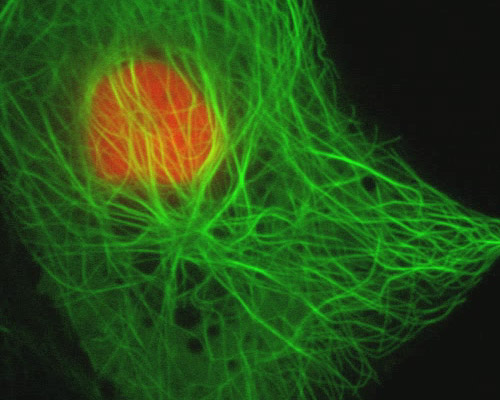Monkey Kidney Cells with mEmerald-MAP4 and mCherry-H2B

MAP4 is a microtubule-associated protein (MAP) found in almost all cell types. Like other MAPS, MAP4 binds to tubulin subunits that comprise microtubules and function in regulating the assembly, stability, and interactions of the cytoskeletal components. Studies have shown that Cyclin B interacts with MAP4 and that this interaction targets cell division cycle 2 (CDC2) kinase to microtubules. MAP4 phosphorylation affects the qualities of microtubules as well as the progression of the cell cycle.
In regards to research on MAP4's disease relevance, it has been revealed that the adenovirus 2 E1B-55K protein relieves p53-mediated transcriptional repression of the survivin and MAP4 promoters. These techniques have proved that thin processes resulting from monkey kidney cells and those created by human neuroblastoma cells in response to retinoic acid are often deficient in MAP4 immuno-reactivity.
The African green monkey kidney fibroblast cells (CV-1 line) featured in the digital video in this section were labeled with mEmerald fused to MAP4 and mCherry fused to histone H2B, a nuclear marker. mEmerald is a high-performance EGFP variant that exhibits improved brightness and that requires less time to mature. The red fluorescent protein mCherry was developed from mRFP1. The improved characteristics of mCherry have essentially rendered its predecessor obsolete.



